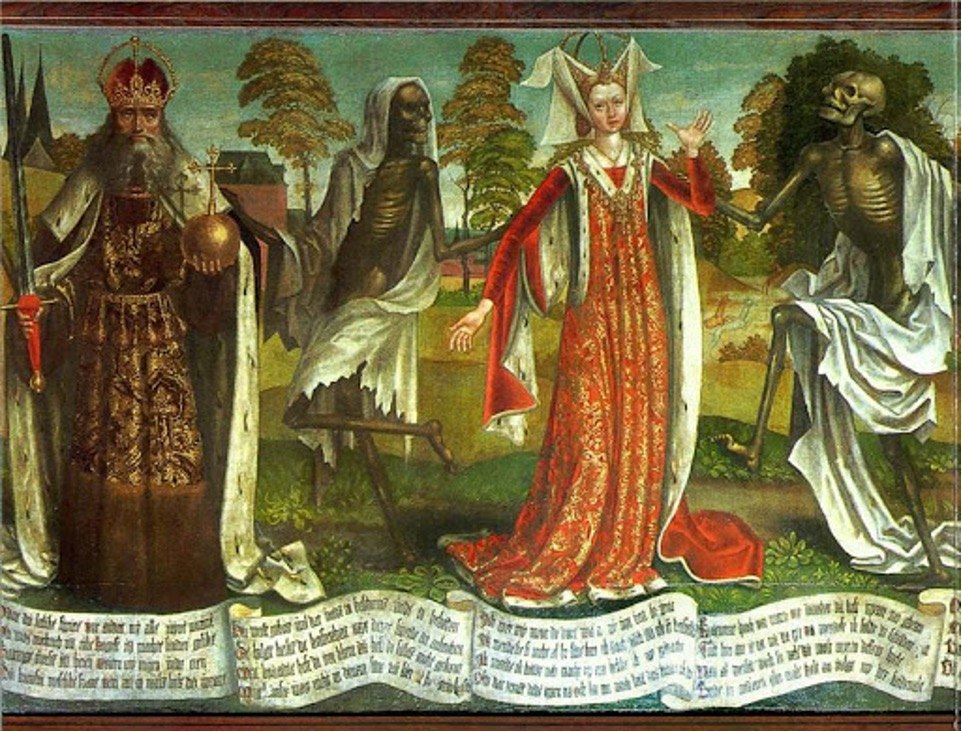
As the UK nears the grim milestone of 113,000 reported deaths within 28 days of a positive COVID-19 test (as of 9th February), it serves as a reminder that history has a tendency to repeat itself. Pandemics are not a novel concept, as they have happened before and are, unfortunately, bound to happen again one day. Whilst art is not one of the first things that may come to mind when you think of the word ‘pandemic’, it is, and always has been, intrinsically linked. When communities faced a new invisible enemy, it was the job of artists to portray the devastating effects of these diseases, therefore forever immortalising these illnesses within a visual medium.
The Black Death is the most infamous of all plagues and is still listed today as the deadliest pandemic ever recorded in human history, with the first outbreak occurring in 1347. It is estimated that the disease caused approximately 25 million fatalities across Europe, Asia and North Africa and, throughout the following four centuries, additional outbreaks occurred every 10 to 20 years. Highly infectious, the plague rapidly decimated communities, leaving devastation in its wake. Meanwhile, all the survivors were left with was the stark realisation of how fleeting life could be and how inescapable death was.
As the Black Death swept through communities, artists were left with the task of visually recording the tragic events of the pandemic. Artists captured the torment of the disease with plague-riddled individuals becoming key central figures of their work. Many also endeavoured to have a high level of realism in their art, therefore further accentuating the horror of the disease. Imagery of skeletons and burial rituals also appeared with increasing frequency. This was because medieval artists were particularly captivated by the immediacy of death that the disease caused. Throughout the years, this led to the popularisation of the danse macabre (Dance of Death) in later artworks from the 15th century and onwards. Bernt Notke’s Danse Macabre is exemplary of this. In this piece, the skeletons are personifications of death, who indiscriminately lead people of all backgrounds to their death by dancing with them to the grave – a powerful image that is indicative of how deadly the plague was to all.
Before science could accurately determine what this seemingly invisible enemy was, religious-based speculation was the preferred method of explanation. Christianity was prevalent in Europe and was extremely influential at the height of the Black Death outbreaks. Therefore, the general population was highly fearful of the disease, believing that it had been sent by God in order to punish the sinful, who would then be damned for eternity in the afterlife. Consequently, artists sought to represent the idea of God’s wrath in their work. This is evident in Pieter Bruegel the Elder’s Triumph of Death. In this painting, a chaotic and apocalyptic scene takes centre stage, which is evocative of the Rapture that is described in the Book of Revelation. Religious allusions are scattered throughout; crosses are embedded within the chaos and a cardinal can also be seen being led to his death by a skeleton in the bottom-left corner. Evidently, the painting shows the immense devastation caused by the plague, which killed all indiscriminately.
As the COVID-19 pandemic rages on across the world, modern day artists have produced, and will continue to produce, their own artwork on the subject of the virus. In May 2020, Banksy left his own artistic take on the pandemic in Southampton Hospital. The illustration, which is titled Game Changer, shows a young boy playing with a nurse superhero toy, whilst his more ‘conventional’ superhero toys, such as Batman and Spiderman, are discarded in a nearby bin. His message is clear: in these perilous times, healthcare workers have become our superheroes. Evidently, Banksy’s piece shows an optimistic perspective of a pandemic, especially in comparison to many medieval artworks.
As the years pass after these pandemics, art remains a window into past lives. Compared with other historical sources, art allows for a more graphic, yet intimate, reading of historical events. Consequently, through art we are able to see the grim reality of these deadly diseases, as well as people’s thoughts and feelings towards them, whether that be anxiety, fear or hope. As a result, these difficult times will be forever etched into our memories. As we bear witness to the COVID-19 pandemic, artists will keep creating their artwork, which will be eagerly received by modern art historians and the general population in years to come.
